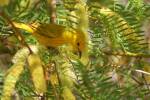A trip to Kelso, Calif., is a trip back in time
More than 100 years ago, steam engines pulled long trains across the forbidding Mojave Desert, stopping for water at spots like tiny Kelso, Calif., about 90 miles south of Las Vegas. Clustered around a handsome mission revival style depot and strung out along sidings, employee housing, water towers, loading docks and machine shops served the Union Pacific. Because of the railroad and producing mines nearby, Kelso grew to a peak population of 2,000.
No one knew that diesel would soon replace steam and profitable mining ventures would play out, leaving Kelso little reason to exist. Now little remains of old Kelso except a few weathered buildings, the still-handsome depot and the shiny pairs of tracks. Many trains still roll past the depot, but none stop.
However, the venerable structure does not lack visitors, for the Kelso Depot now serves as a visitor center and museum for the vast territory administered by the National Park Service as the Mojave National Preserve. Many visitors travel south a few miles from the depot to see the expansive Kelso Dunes, the second largest dune field in the United States and some of the highest at several hundred feet. Protected because of rare plants and creatures, the Kelso Dunes remain closed to motorized vehicles.
To reach Kelso from Las Vegas, drive south on Interstate 15 through Primm about 50 miles to Highway 164, the Searchlight cutoff. Nearly four miles from the freeway exit, turn south on the Ivanpah Road. After another four miles, take the Morning Star Mine Road. Follow it through Cima to Kelso, about 33 miles, much of the distance paralleling the Union Pacific tracks. Nevada visitors also approach from Baker, Calif., about 35 miles west of Kelso on I-15, but the overall distance that way from Las Vegas is 135 miles.
Railroad construction across the Mojave became a reality in 1905 with completion of the San Pedro, Los Angeles and Salt Lake City Railroad, later to become one with the Union Pacific. One of many desert sidings used to take on water for the steam locomotives, Kelso started with a small depot, an eating house for employees and passengers, a post office and maintenance buildings.
To compete with the Santa Fe Railway's popular Harvey House train stations serving passengers along that line, the company was determined to construct stylish new stations along the SP, LA & SLC. A fine, two-storied depot with deep porches formed by arched columns and a full basement rose beside the tracks at Kelso in 1924. The attractive tile-roofed depot offered landscaped lawns and shade from stately date palms.
Inside, passengers found a pleasant cafe, a billiards room, a reading room and restrooms. The building included a telegraph office, baggage room and employee amenities such as a locker room, conductors' lounge, and dormitory and single rooms for staff. The building functioned as a depot until 1962 and remained in use by a dwindling number of crew members until its closing in 1985.
The Kelso Depot came very close to the wrecking ball in later years, deemed an attractive nuisance and a liability by the Union Pacific. A grass roots campaign by concerned citizens and historical preservationists saved it, calling attention to its plight. Thanks to the actions of local officials and members of Congress, ownership of the structure transferred to the Bureau of Land Management in 1992, then the agency charged with administering the East Mojave National Scenic Area. The California Desert Protection Act of 1994 created the Mojave National Preserve under the National Park Service.
Restoration of the Kelso Depot began in 2002, aiming to stabilize the building and return it to the style it enjoyed in its pre-World War II heyday. It opened as a museum and the Mojave National Preserve's main visitor center in 2005. Visitors today see cultural and natural history exhibits in some former dormitory rooms. Two dorm rooms, the ticket office and the baggage room contain furnishings and artifacts from the first half of the 20th century.
The future may see reopening of the beanery. Allow time to enjoy the short film. The depot welcomes visitors free of charge every day except Christmas from 9 a.m. to 5 p.m.
Margo Bartlett Pesek's column appears Sundays.
MARGO BARTLETT PESEKMORE COLUMNS




























